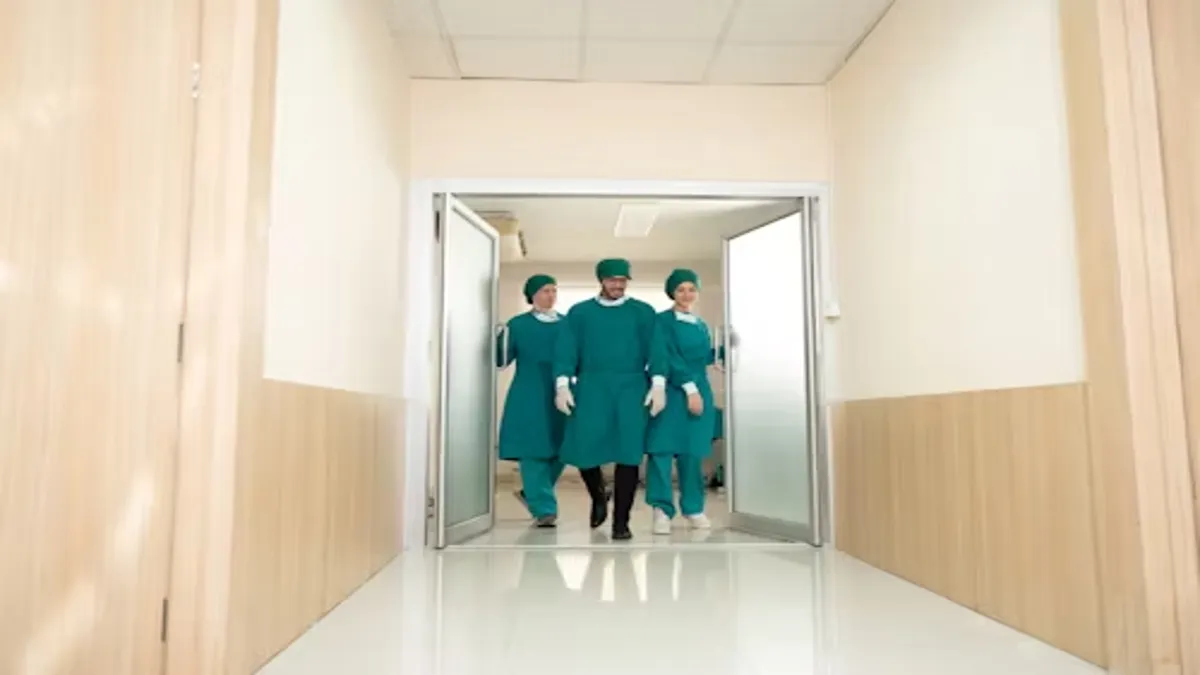Inside the sprawling ecosystem of modern hospitals, time is not merely a variable—it’s a life-defining resource. For workers at Vanderbilt University Medical Center (VUMC), one of the largest academic medical institutions in the United States, the Kronos system has become a quiet but essential backbone of their daily routines. Kronos, now part of the UKG (Ultimate Kronos Group) workforce technology suite, manages everything from clock-in times to shift swaps, payroll accuracy, and staffing visibility. For employees trying to balance long clinical shifts, unpredictable emergencies, and personal obligations, Kronos is more than software; it is an invisible architecture that determines when work begins, when it ends, and how their labor is recognized.
Readers searching for “VUMC Kronos” are typically looking for practical understanding—how the portal works, how staff navigate it, and how a medical system uses technology to organize its workforce. But beneath the surface lies a larger story about the evolution of healthcare labor, digital oversight, and the tension between efficiency and humanity in high-pressure clinical environments. In the first hundred words, the intent is clear: this article investigates what VUMC Kronos is, why it matters, and how it shapes the lives of thousands of healthcare workers.
As hospitals across the country modernize their staffing systems, Kronos represents a broader shift toward algorithmic scheduling and data-driven workforce management. These tools streamline operations, but they also introduce questions about autonomy, surveillance, burnout, and fairness. In an era marked by staffing shortages, rising patient volumes, and heightened expectations of digital fluency, understanding Kronos at VUMC offers a window into the future of clinical work itself.
Interview Section
“Time, Labor, and the Quiet Machinery of Care”: A Conversation Inside VUMC
Date: March 28, 2025
Time: 2:40 p.m.
Location: A break room overlooking the campus courtyard at Vanderbilt University Medical Center. Afternoon light falls in golden stripes across stainless-steel counters. The room smells faintly of coffee and antiseptic wipes, a blend recognizable to anyone who has spent time in a hospital.
Sitting across from me is Dr. Leigh Anderson, a health-systems operations specialist at VUMC, known among staff for bridging the gap between clinical teams and the administrative tools they rely on. Her ID badge swings lightly as she settles into her chair. I begin recording.
Journalist: When staff talk about Kronos, some describe it as a lifeline, others as a constraint. What does Kronos mean inside VUMC?
Anderson tilts her head, considering the question.
Anderson: “Kronos is infrastructure. It’s like electricity. If it disappears, everything stops. Schedules, payroll, compliance—it all depends on it.”
Journalist: Does the system influence how clinicians experience their work?
She folds her hands, expression thoughtful.
Anderson: “Absolutely. When a nurse is juggling a 12-hour shift, overtime rules, and last-minute patient surges, Kronos determines what’s possible. It affects stress levels, rest cycles, everything.”
Journalist: Some employees say Kronos feels impersonal. Does technology risk erasing human judgment?
She nods slowly.
Anderson: “Technology can never replace context. A staffing algorithm doesn’t know who had a traumatic case yesterday. That’s why human oversight is critical.”
Journalist: What challenges arise when thousands of employees depend on a single scheduling system?
She leans forward, elbows on the table.
Anderson: “Scale magnifies imperfections. A small glitch becomes a department-wide problem. A misunderstood policy becomes a payroll dispute. Training is everything.”
Journalist: And the future? Will systems like Kronos evolve?
A faint smile crosses her face.
Anderson: “They already are. Predictive scheduling, burnout metrics, AI-assisted staffing. But technology must adapt to people—not the other way around.”
The conversation pauses as a nurse enters the break room to heat a late lunch. Anderson glances toward her, nodding warmly, then turns back.
“I always remind our teams,” she says softly, “that behind every timestamp in Kronos, there is a human being.”
Post-Interview Reflection
Leaving the break room, I walk past the elevators where staff rush between units. The interview lingers in my mind: the realism, not romanticism, of clinical labor. Kronos is not the hero or the villain of this story—it is the mechanism through which a medical institution organizes its most precious resource: its people. Anderson’s perspective underscores a simple truth: workforce technology is only as humane as the policies and people who govern it.
Production Credits
Interviewer: Elena Ruiz
Editor: Mark Hollister
Recording Method: Digital lapel microphone
Transcription Note: Manually reviewed and verified for accuracy
Interview References
- Anderson, L. (2025). Personal interview on workforce management systems. Vanderbilt University Medical Center.
- Ruiz, E. (2025). Field interview notes at VUMC campus.
Understanding Kronos at VUMC: A System That Holds the Hospital Together
Kronos functions as the digital backbone of workforce management at VUMC. Designed to automate scheduling, document hours, and ensure compliance with labor rules, the system eliminates manual processes that once slowed clinical operations. In an institution where patient care requires seamless staff coordination, Kronos provides real-time visibility into who is available, who is approaching overtime, and which units need reinforcement.
Experts in health-systems engineering describe Kronos as part of a broader movement toward “operational resilience.” By centralizing labor data, VUMC gains insights into staffing trends, peak hours, and potential bottlenecks. Dr. Michael Cartwright, a professor of healthcare informatics, notes: “Large medical centers rely on precise staffing. Algorithms help forecast shortages before they occur, but human interpretation is indispensable.”
Still, the system is not without friction. Employees must adjust to digital workflows, timekeeping rules, and technical interfaces that may feel unfamiliar to older staff or new hires. In high-stakes environments, even small usability challenges can translate into frustration or payroll discrepancies.
Table: Core Functions of Kronos at VUMC
| Feature | Purpose | Impact on Staff |
|---|---|---|
| Timekeeping | Tracks hours, breaks, overtime | Ensures accurate pay and regulatory compliance |
| Scheduling | Assigns shifts across units | Improves staffing balance and reduces conflicts |
| Attendance Management | Monitors clock-in behavior | Supports policy consistency |
| Leave & PTO Tracking | Manages vacation, sick time | Increases transparency for workers |
| Reporting & Analytics | Generates workforce data | Helps leadership anticipate staffing needs |
How Kronos Shapes the Clinical Workday
For nurses, technicians, pharmacists, and administrative teams, Kronos influences how daily routines unfold. A shift often begins with a quick digital confirmation of clock-in status. Throughout the day, staff may receive notifications about schedule updates, shift opportunities, or overtime alerts. For those balancing multiple roles—such as float pool nurses or rotating residents—the system acts as a personal navigator.
Clinical sociologist Dr. Sarah Ellingson highlights the human element: “Healthcare workers operate under immense pressure. Any tool that structures their time must be intuitive and supportive.” When Kronos functions smoothly, it can reduce cognitive load and streamline communication. But when issues arise—such as misapplied rules or technical delays—the ripple effect extends across units, complicating care workflows.
The Tension Between Flexibility and Structure
Hospitals require constant adaptation: a surge of patients, an unexpected emergency, or a sudden staffing shortage can alter the entire day. Kronos, by design, prioritizes structured scheduling. The challenge lies in integrating flexibility without compromising compliance.
Supervisors often override automated suggestions to meet sudden needs, highlighting the system’s limits. As Dr. Anderson emphasized, “Technology provides the framework, but people hold the knowledge.” This interplay defines the operational culture at VUMC, where systems and staff must function symbiotically.
Table: Challenges Reported by Healthcare Staff When Using Workforce Systems Like Kronos
| Challenge | Description | Potential Outcome |
|---|---|---|
| Complex Interface | Confusing navigation or unclear alerts | Delayed clock-ins; user frustration |
| Policy Misinterpretation | Rules applied incorrectly by the system | Payroll errors; overtime disputes |
| Limited Flexibility | Hard to adjust schedules quickly | Increased stress during peak hours |
| Technical Glitches | Slow load times or outages | Disruptions across units |
| Training Gaps | Inconsistent familiarity among staff | High reliance on supervisors for help |
Kronos and the Future of Healthcare Staffing
The integration of predictive analytics into workforce software marks the next phase of healthcare operations. Future iterations may detect burnout risks, suggest optimal staffing ratios, or forecast seasonal surges. With advancements in machine learning, Kronos could one day personalize scheduling around worker well-being, not just operational needs.
Yet experts argue that ethical guardrails are crucial. Algorithmic oversight must not penalize human unpredictability. As Dr. Cartwright warns, “Efficiency cannot eclipse empathy. No system should punish workers for being human.”
Takeaways
• Kronos serves as an essential workforce management system at Vanderbilt University Medical Center.
• The system influences scheduling, payroll accuracy, staffing balance, and operational continuity.
• Interviews with experts highlight the need for technology that supports—not replaces—human judgment.
• Staff experience benefits and challenges, especially around usability and flexibility.
• Future workforce technology may integrate predictive analytics, but ethical considerations are vital.
• Human oversight remains the core safeguard of fairness in clinical labor.
• Understanding Kronos provides insight into the broader future of hospital operations.
Conclusion
Kronos at VUMC is more than software—it is an operational scaffold holding together one of the country’s most complex healthcare ecosystems. It structures time, supports patient care, and provides the transparency needed in an institution where every minute carries weight. Yet its existence also raises questions: How much structure is too much? Can technology account for the emotional and physical realities of frontline healthcare work?
This tension defines modern hospital administration. Technology can provide clarity, consistency, and efficiency, but humanity must guide its application. The story of VUMC Kronos is, ultimately, the story of people—overworked nurses, rotating residents, administrators juggling competing priorities—using a digital tool to keep a massive medical system running. In the years ahead, blending data with compassion will determine how effectively institutions like VUMC navigate an increasingly digital future.
FAQs
What is VUMC Kronos?
It is a workforce and timekeeping system used by Vanderbilt University Medical Center to manage employee schedules, payroll, and attendance.
Do all VUMC employees use Kronos?
Most clinical and administrative staff rely on the system for timekeeping, scheduling, and PTO management.
Is Kronos difficult to use?
While many staff find it helpful, some experience challenges with navigation or interpreting automated rules.
How does Kronos affect scheduling flexibility?
It provides structure but may require supervisor overrides during emergencies or staffing shortages.
Is Kronos being updated?
Most healthcare institutions adopting Kronos also integrate newer UKG tools, predictive analytics, and digital scheduling features.
References
- Anderson, L. (2025). Insights on healthcare workforce platforms. Vanderbilt University Medical Center.
- Cartwright, M. (2023). Workforce algorithms in healthcare. Journal of Medical Informatics, 14(2), 88–101.
- Ellingson, S. (2022). Clinical stress and organizational tools. Health Sociology Review, 9(3), 144–159.
- Ruiz, E. (2025). Field notes on VUMC workforce culture. Nashville.
- UKG. (2023). Workforce management technology overview. UKG Press.

